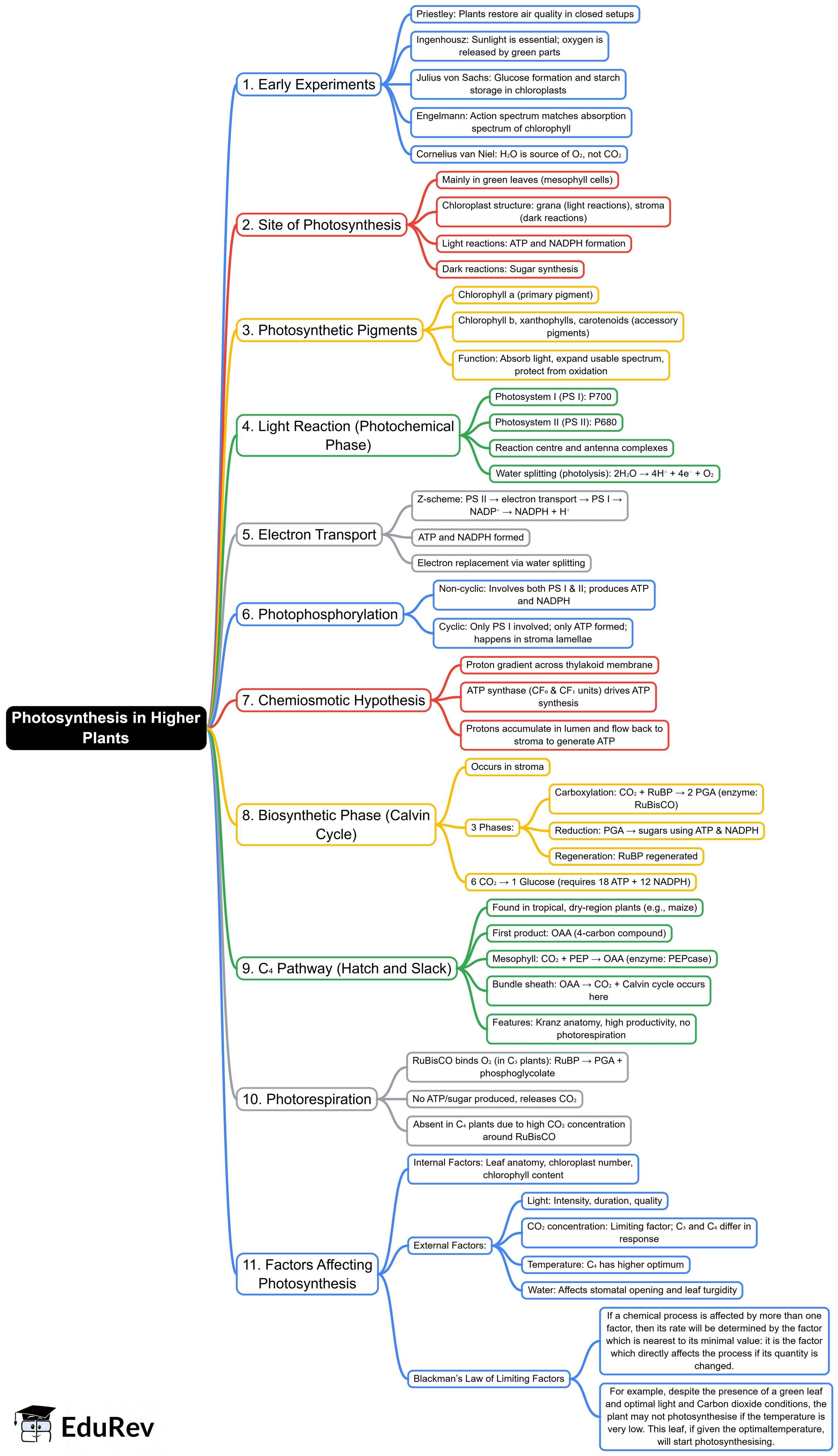NEET Exam > NEET Notes > Biology Class 11 > Mind Map: Photosynthesis in Higher Plants
Mind Map: Photosynthesis in Higher Plants | Biology Class 11 - NEET PDF Download

The document Mind Map: Photosynthesis in Higher Plants | Biology Class 11 - NEET is a part of the NEET Course Biology Class 11.
All you need of NEET at this link: NEET
|
183 videos|524 docs|136 tests
|
FAQs on Mind Map: Photosynthesis in Higher Plants - Biology Class 11 - NEET
| 1. What is the overall equation for photosynthesis in higher plants? |  |
Ans.The overall equation for photosynthesis in higher plants can be represented as: 6CO₂ + 6H₂O → C₆H₁₂O₆ + 6O₂. This means that six molecules of carbon dioxide and six molecules of water, in the presence of sunlight and chlorophyll, are converted into one molecule of glucose and six molecules of oxygen.
| 2. What are the main stages of photosynthesis in higher plants? |  |
Ans.Photosynthesis in higher plants occurs in two main stages: the light-dependent reactions and the light-independent reactions (Calvin cycle). The light-dependent reactions take place in the thylakoid membranes of chloroplasts and require sunlight to produce ATP and NADPH. The light-independent reactions, occurring in the stroma, utilize ATP and NADPH to convert carbon dioxide into glucose.
| 3. Why is chlorophyll important for photosynthesis? |  |
Ans.Chlorophyll is a green pigment found in the chloroplasts of higher plants and is essential for photosynthesis because it absorbs light energy, primarily in the blue and red wavelengths. This energy is then used to drive the light-dependent reactions, leading to the production of ATP and NADPH, which are crucial for the subsequent conversion of carbon dioxide into glucose.
| 4. How does light intensity affect the rate of photosynthesis in higher plants? |  |
Ans.Light intensity significantly influences the rate of photosynthesis. As light intensity increases, the rate of photosynthesis typically increases up to a certain point, beyond which other factors (like carbon dioxide concentration and temperature) may limit the process. If light intensity is too high, it can lead to photoinhibition, where the photosynthetic apparatus is damaged, reducing the overall rate of photosynthesis.
| 5. What role do stomata play in photosynthesis in higher plants? |  |
Ans.Stomata are small openings on the surfaces of leaves that regulate gas exchange. They play a critical role in photosynthesis by allowing carbon dioxide to enter the leaf and oxygen to exit. The opening and closing of stomata are controlled by guard cells, ensuring that the plant can take in carbon dioxide during the day while minimizing water loss.
Related Searches
















